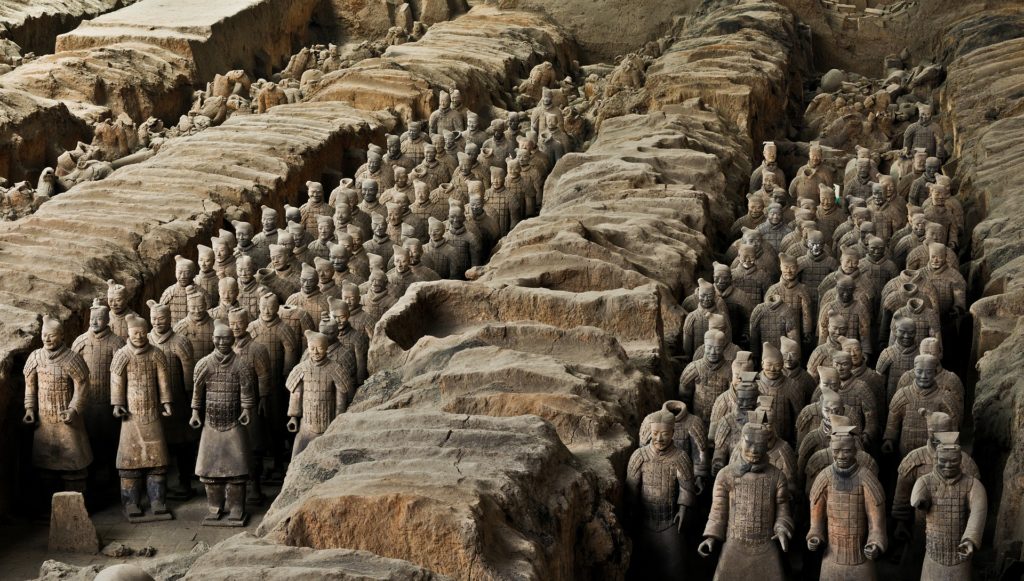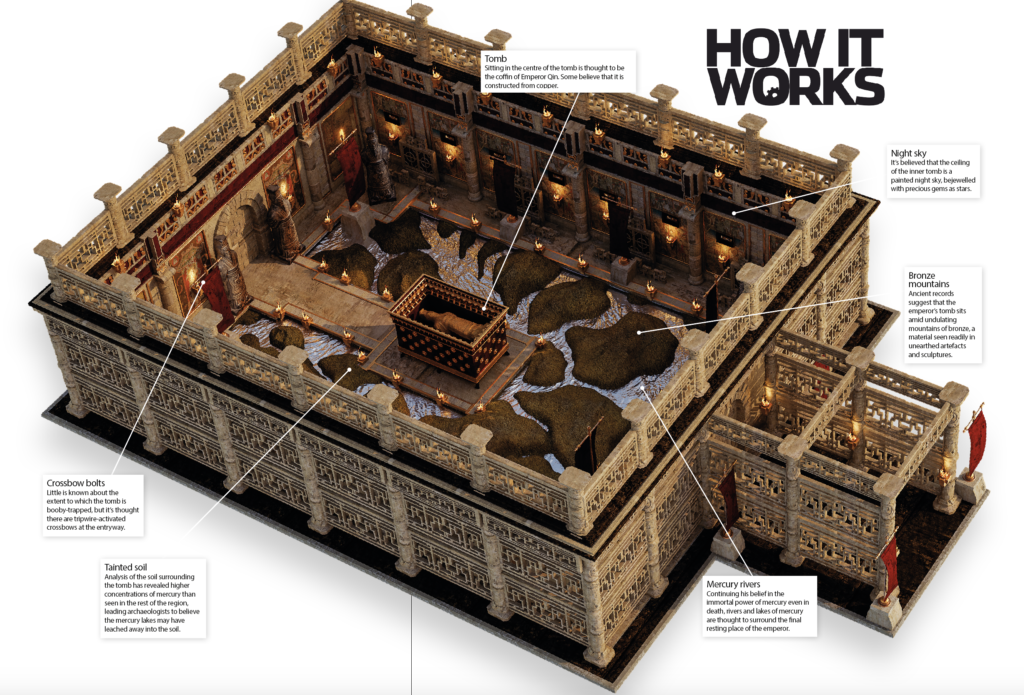Inside the secret tomb of Emperor Qin
by Scott Dutfield · 27/12/2020
Meet the buried army of the First Emperor of China and his mysterious, as-yet-unopened tomb that he left behind

Imagine the looks of surprise on the faces of a group of well diggers when, while breaking ground in the hope of finding water, they instead uncovered a network of underground chambers housing thousands of ancient stone soldiers, still standing to attention.
Discovered outside of Xi’an, the capital of the Shaanxi Province in central China, the mausoleum of Qin Shi Huang, the First Emperor of China, has provided one of the largest bounties of ancient artefacts ever discovered. Over 8,000 terracotta warriors have been uncovered at the ancient site since its initial discovery back in 1974 in arguably one of the greatest finds in archaeological history.
Around the fifth to third century BCE, China was divided into seven states, each waging war on another during a time known as the Warring States Period. As the leader of a western state called Qin, Ying Zheng rose to even greater power after emerging triumphant in the battles against the other six states in 221 BCE. After his victory, Ying Zheng united the feuding regions and declared himself the First Emperor of China under the new name of Qin Shi Huang. As emperor of this collective, it’s well documented that Qin Shi Huang was a dictator. Some accounts detail an incident in which 460 scholars were executed for disagreeing with Qin’s government, and their texts were burned or confiscated. Having assembled a living army comprising of hundreds of thousands of soldiers, Emperor Qin turned his attention to a palace and military force he desired not only in the living world, but one he could reside with in death.
Taking around 38 years to construct at the hands of an estimated workforce of 720,000 men, the mausoleum of Emperor Qin is an underground palace filled with pits and buried chambers to house everything the emperor believed he needed and wanted to take with him into the afterlife. This included the creation of the terracotta army, along with other sculptures such as military officials, civil servants, acrobats and horses. However, clay-made sculptures aren’t the only residents of the mausoleum. As a ruthless leader, Emperor Qin also wanted the actual bodies of some of his servants, officials and concubines – the emperor’s mistresses – to join him in the hereafter. In pits found around the tomb are the remains of those chosen to follow him into the afterlife. Some of these unfortunates are thought to have been buried alive.
What remains a mystery about the mausoleum is what exactly lies within Emperor Qin’s tomb. The final resting place of the First Emperor is thought to be hidden deep within the heart of a grassy mound near the Terracotta Warriors, along with precious gems, personal possessions and even some booby traps. Since the discovery of its location, the tomb has yet to be opened and explored. Details of the tomb’s construction and possible contents were documented by the ancient historian Sima Qian in a collection of historical records called Shiji, dating back to about 85 BCE. It’s believed that it took Qian 18 years to complete the records, which spanned around 2,000 years of historical events and key figures. However, it wasn’t until 1961 that these records were translated into English. Without having seen inside the tomb for himself, both Sima Qian and modern-day historians are still in the dark about what exactly lies within the walls of the emperor’s tomb.
Inside the unopened tomb
What secrets lie in wait for when the first archaeologist takes a peek inside?

Do not enter
It seems strange that one of the world’s biggest archaeological discoveries has not been completely excavated. The First Emperor has lain undisturbed in his mausoleum for decades since its discovery, which has led many to wonder why. Unfortunately the answer is still unclear, with some suggesting it’s a sign of respect for the emperor. Others believe the Chinese authorities haven’t opened it out of fear of how the contents would react to being exposed to the outside world. One reason for leaving it sealed may be because of the lakes and rivers of mercury that are presumed to flow within: deadly mercury vapour may have collected in the musty tomb air over thousands of years.
For more science and technology articles, get your Christmas subscription to How It Works for as little as £7.15 on our website now. If you have a tablet or smartphone, you can also download the digital version onto your iOS or Android device. To make sure you never miss an issue of How It Works magazine, subscribe today!






